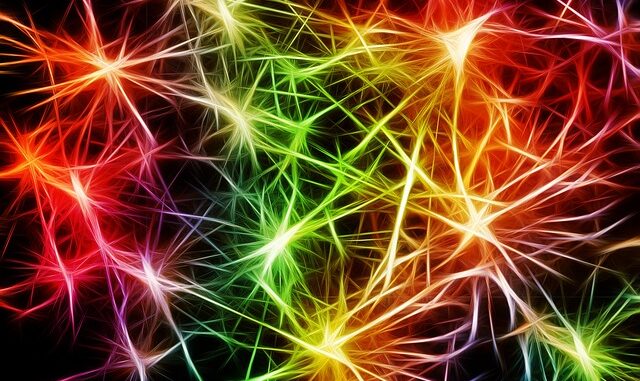
Summary
This article explores how drugs of abuse exploit the brain’s reward system, focusing on the mesolimbic dopamine pathway. It details how this “hijacking” disrupts natural reward processing, leading to addiction. The article also discusses potential therapeutic targets based on this understanding.
** Main Story**
The human brain, a truly remarkable organ, is wired with a reward system. This system is designed to encourage behaviors crucial for survival, like eating and drinking; a pat on the back from our own bodies, you might say. But here’s the rub: this very system can be exploited, becoming the engine of addiction. Let’s take a deep dive into how drugs of abuse interact with the mesolimbic dopamine pathway – the brain’s central reward circuit – to understand the neurobiological roots of addiction.
The Mesolimbic Pathway: A Blessing and a Curse
The mesolimbic dopamine pathway sits right at the heart of the brain’s reward system. Starting in the ventral tegmental area (VTA), it reaches out to the nucleus accumbens (NAc), a key area for processing motivation and reward. When we do things we enjoy, or satisfy a need, dopamine is released in the NAc, reinforcing that behavior. Think of it as a biological ‘well done!’
But drugs? Drugs are the ultimate cheaters. Substances like cocaine, amphetamine, opioids, nicotine, and alcohol directly, or indirectly, flood the NAc with dopamine, and to a much greater degree than natural rewards ever could. This massive surge creates an intense feeling of euphoria, which really, really reinforces drug-seeking. You can see how easily this can spiral.
How the Hijacking Happens: Disrupting Homeostasis
When someone uses drugs chronically, it fundamentally changes the mesolimbic pathway; disrupting the brain’s delicate balance. This is what we call homeostasis.
Repeated exposure to high levels of dopamine desensitizes the reward system. That means, natural rewards just don’t cut it anymore. I remember reading a study, I believe it was published in “Nature”, detailing how mice who had become addicted to cocaine would actively choose the drug over food even when starving. It’s harrowing stuff. This decreased response to natural rewards, paired with the huge dopamine hit from drugs, further strengthens the need to find and use drugs.
Furthermore, drugs interfere with other brain regions connected to the mesolimbic pathway, notably the prefrontal cortex. Now, the prefrontal cortex is vital for decision-making and impulse control. Cognitive function is impaired as a result and this contributes to that loss of control over drug use that is a trademark of addiction. It’s no longer a choice, it’s a compulsion.
Unraveling the Complexity: Cell-Type Specific Effects
Recent research is highlighting the detailed, cell-type-specific impact of drugs within the NAc. Studies reveal that drugs affect different neuronal populations differently, leading to a complex mix of excitation and inhibition within the reward circuit. For example, some neuronal populations are activated by both drugs and natural rewards, while others respond only to drugs. This contributes to the uniquely motivating properties of addictive substances. Understanding these cell-type specific responses is key to developing more targeted addiction therapies, don’t you think?
The Molecular Mechanisms: Rheb-mTOR Pathway
A critical molecular player in this disruption is the Rheb-mTOR signaling pathway within the NAc. It is key in regulating cellular processes like protein synthesis and cell growth. Drugs can cause the Rheb-mTOR pathway to become unregulated, leading to changes in neuronal function. These changes ultimately contribute to that compulsive drug-seeking behavior we see in addiction.
From Reward to Addiction: A Shift in Motivation
Why does recreational drug use turn into full-blown addiction? Well, it’s a mix of factors: genetic predisposition, environmental influences, and the drug’s own properties. As drug use continues, the brain becomes increasingly sensitive to drug-related cues, leading to intense cravings and compulsive drug seeking. This sensitization, unfortunately, can stick around even after long periods of abstinence. It’s why relapse is such a difficult hurdle in recovery.
Therapeutic Implications: Targeting the Hijacked System
It’s important to note that, by understanding the neurobiological mechanisms behind addiction, we’ve opened doors to new therapeutic approaches. Researchers are investigating ways to restore balance within the mesolimbic pathway and other affected areas. This includes developing medications that target specific neurotransmitter systems, like dopamine and glutamate. At the same time, behavioral therapies aim to boost cognitive control and reduce cue-induced cravings. It’s a multifaceted approach, and while there’s still a long way to go, every step forward offers hope.
I feel its worth stating that addiction is a complex disease that requires a nuanced understanding and compassionate treatment. By continuing to unravel the complexities of the brain’s reward system, we can work towards developing more effective strategies to prevent and treat addiction.


Be the first to comment